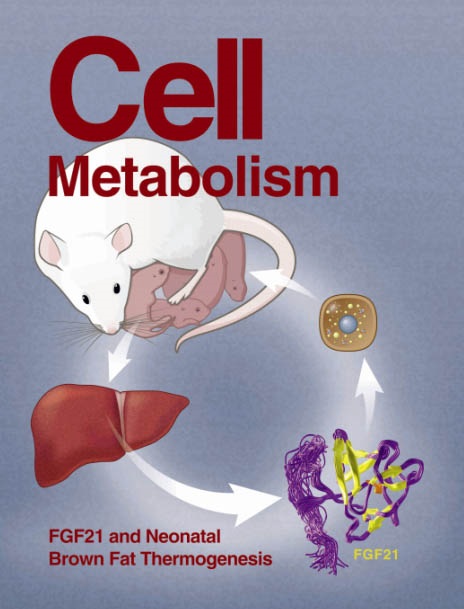花生四烯酸触发原发肿瘤分泌亚精胺合成酶,诱导辐照后骨骼肌无力
IF 30.9
1区 生物学
Q1 CELL BIOLOGY
引用次数: 0
摘要
放疗降低了癌症复发和死亡的风险,但同时伴有肌肉纤维化、虚弱等多重副作用,严重影响了患者的生活质量。然而,其基本机制定义不清。在这里,我们发现癌细胞通过小的细胞外囊泡分泌更多的亚精胺合成酶(SRM)酶,从而引发放疗后骨骼肌无力。从机制上说,辐射触发的花生四烯酸(ArA)积累会提高SRM蛋白的isg酰化,促进SRM从原发肿瘤包装到细胞外囊泡。循环SRM以依赖eif5a的方式导致骨骼肌中的亚精胺积累和I型胶原纤维的生物合成。然而,氯沙坦治疗阻断了SRM的isg酰化及其随后的分泌。总的来说,我们的研究结果确定了ArA在放疗时循环SRM分泌的协同作用,这通过多胺代谢的重新连接加重了骨骼肌纤维化,揭示了放射治疗介导的肌肉无力与氯沙坦联合治疗时的缓解。本文章由计算机程序翻译,如有差异,请以英文原文为准。

Arachidonic acid triggers spermidine synthase secretion from primary tumor to induce skeletal muscle weakness upon irradiation
Radiotherapy reduces the risk of cancer recurrence and death, but the fact that it's accompanied by multiple side effects including muscle fibrosis and weakness, seriously affects the life quality of patients. However, the underlying mechanism is poorly defined. Here, we identify that cancer cells secrete more spermidine synthase (SRM) enzyme through small extracellular vesicles to trigger skeletal muscle weakness upon radiotherapy. Mechanistically, irradiation-triggered arachidonic acid (ArA) accumulation elevates the ISGylation of the SRM protein, facilitating SRM packaging into extracellular vesicles from the primary tumor. Circulating SRM results in spermidine accumulation in skeletal muscle and type I collagen fiber biosynthesis in an eIF5A-dependent manner. However, losartan treatment blocks the ISGylation of SRM and its subsequent secretion. Collectively, our findings determine that ArA functions in concert for circulating SRM secretion upon radiotherapy, which aggravates skeletal muscle fibrosis through rewiring polyamine metabolism, shedding light on the alleviation of radiotherapy-mediated muscle weakness when combined with losartan treatment.
求助全文
通过发布文献求助,成功后即可免费获取论文全文。
去求助
来源期刊

Cell metabolism
生物-内分泌学与代谢
CiteScore
48.60
自引率
1.40%
发文量
173
审稿时长
2.5 months
期刊介绍:
Cell Metabolism is a top research journal established in 2005 that focuses on publishing original and impactful papers in the field of metabolic research.It covers a wide range of topics including diabetes, obesity, cardiovascular biology, aging and stress responses, circadian biology, and many others.
Cell Metabolism aims to contribute to the advancement of metabolic research by providing a platform for the publication and dissemination of high-quality research and thought-provoking articles.
 求助内容:
求助内容: 应助结果提醒方式:
应助结果提醒方式:


